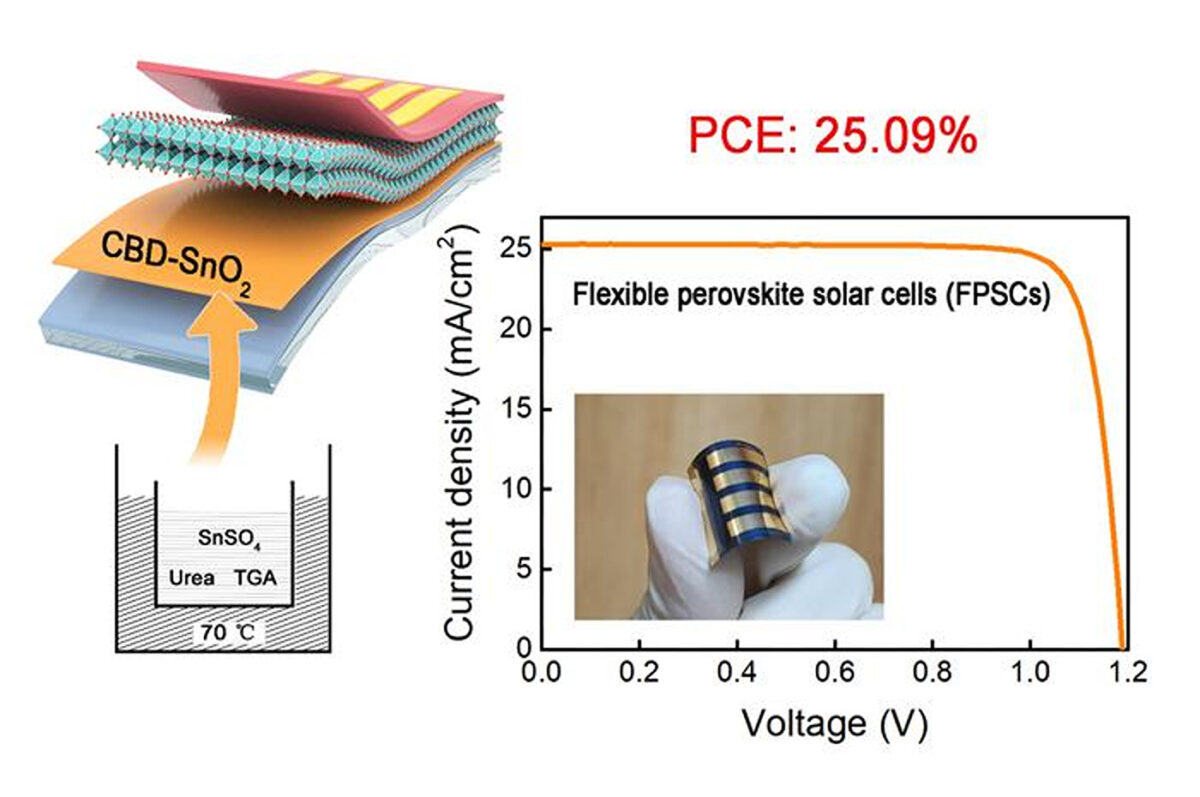Researchers at China's Tsinghua University developed a flexible perovskite solar cell based on an electron transport layer (ETL) made of tin oxide (SnO2). The novelty of the proposed cell design consists of the chemical bath deposition (CBD) method used to deposit SnO2 on the flexible substrate.
“This CBD method differs from previous research by using tin sulfate (SnSO4) rather than tin(II) chloride (SnCl2) as a tin precursor for depositing SnO2, making the new method compatible with acid-sensitive flexible substrates,” said the research's lead author, Chenyi Yi. “The residual SO42- sulfate left over after the SnSO4-based CBD additionally benefits the stability of the perovskite solar cell because of the strong coordination between lead (Pb2+) from perovskite and SO42- from SnO2.”
The research group explained that the quality of the ETL is key for achieving high power conversion efficiencies in flexible perovskite solar cells and said SnO2 was chosen due to its high bulk charge mobility, wide bandgap, and good energy band alignment with perovskite. It also added, however, that uncontrolled nanocrystal growth during the CBD process may result in a narrow deposition window for high-quality SnO2 film, which in turn may lead to “unsatisfactory” reproducibility.
The academics built the cell with a substrate made of indium tin oxide (ITO) and polyethylene terephthalate (PET), the SnO2 ETL, a perovskite absorber, a hole transport layer (HTL) relying on spiro-OMeTAD, and a gold (Au) metal contact.
Tested under standard illumination conditions, the device achieved a power conversion efficiency of 25.09%, an open-circuit voltage of 1.188 V, a short-circuit current density of 25.29 mA cm−2, and a fill factor of 83.5%. The researchers also specified that the cell efficiency was certified at 24.90% by an unspecified testing entity.
They also said the device was able to retain 90% of the initial efficiency after 10,000 bending cycles. “The controllable growth of SnO2 not only ensures excellent reproducibility of the CBD, but also enables the reutilization of the chemical bath, holding great promise for large-scale applications,” the group explained.
“The ultimate goal is to transition these high-efficiency flexible perovskite solar cells from laboratory scale to industrial production, enabling widespread commercial application of this technology in various fields, from wearable technology, portable electronics and aerospace power sources to large-scale renewable energy solutions,” added Yi.
The new cell design was introduced in the study “25% – Efficiency flexible perovskite solar cells via controllable growth of SnO2,” published in iEnergy.
This content is protected by copyright and may not be reused. If you want to cooperate with us and would like to reuse some of our content, please contact: editors@pv-magazine.com.




By submitting this form you agree to pv magazine using your data for the purposes of publishing your comment.
Your personal data will only be disclosed or otherwise transmitted to third parties for the purposes of spam filtering or if this is necessary for technical maintenance of the website. Any other transfer to third parties will not take place unless this is justified on the basis of applicable data protection regulations or if pv magazine is legally obliged to do so.
You may revoke this consent at any time with effect for the future, in which case your personal data will be deleted immediately. Otherwise, your data will be deleted if pv magazine has processed your request or the purpose of data storage is fulfilled.
Further information on data privacy can be found in our Data Protection Policy.